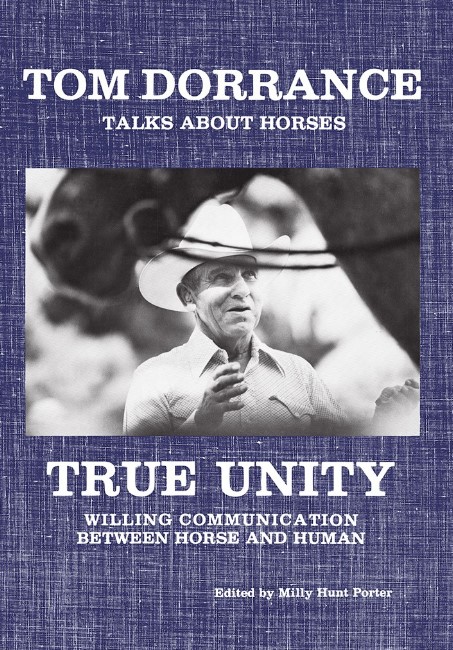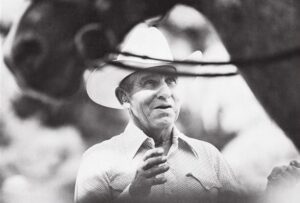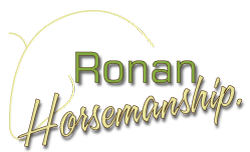Tom Dorrance is the most important reference when we deal with modern Natural Horsemanship in North America. He has launched this new wave of a more respectful horsemanship, although he probably never did it on purpose. This horseman was greatly skilled and reputed to be able to start a wild colt within a few hours, not by magic, simply by listening to the horse and speaking to it in a clear, gentle and comprehensive language.
The book contains different texts: some are written or said by Tom Dorrance _ they are the most interesting of course _, and some are written by students. Students are sometimes quite famous people such as Bill Dorrance, Martin Black, Bryan Neubert or Joe Wolters. Yet, I tend to be very critical with this kind of texts as people like to praise and idolize, and usually forget to be objective. Still, we can find some interesting information in these “Students’ feedbacks”.
True Unity is a very important resource as it contains lots of wisdom, all the natural horsemanship philosophy lays in these pages. That is also its main defect: you will not find any practical information, any exercise in the book. As in most books written by genius, it is full of treasures, but you have to dig hard to find them! In the present post, I try to dig up some of these treasures. I can not write about all of them as it would be too long and fastidious though.
There are three words, three concepts on which is based all Tom Dorrance’s approach to horses. The same concepts have been used to divide his texts in the book:

- Feel (“Feel the Whole Horse”)
- Timing (Responsive and Right On)
- Balance (Approach and Unity)
These ideas are the most valuable treasures, but also the most complicated to understand and overall to apply in our daily horsemanship. We could actually pair them with qualities I talked about in other pages of this web site: Empathy, Patience and Humility.
 Feel
Feel
True Unity, Tom Dorrance
Anyway, those three concepts have to be considered as one: Feel. The main quality we should develop as horsemen and horsewomen is empathy, our capacity to think as a horse, to figure out how our horse feels at the very moment we are with it, we spend time with it. Every time we ask something from our horse, we should feel it entirely: from its psychological state to its physical integrity to its will to be with us. We should start working with our horses from these observations, not from our to-do-list!
 Timing
Timing

True Unity, Tom Dorrance
 Balance
Balance
Balance covers two areas: the approach of the rider to the horse on one hand, the physical abilities of the horse on the other hand. We, as horsemen and horsewomen, have to consider how important is our behavior in our horse’s education. Be too gentle and you will end up with a spoiled horse. Be too harsh and your horse will become spooky and shy. We should always weight carefully the consequences of our acts and decisions, as each of them is a part of the jigsaw puzzle: make sure it is placed correctly and gently, but make sure also that your horse keeps it in place and respect your choice. That is where humility takes place as this requires your questioning yourself all the time. Do not be afraid to make a bad decision, your horse will forgive. More important, do not be afraid to analyze what you did and to criticize your acts and decisions.
True Unity, Tom Dorrance
Well, I would like to conclude this post by quoting the title of the last chapter written by Tom Dorrance in this book: “Learning to Do Less to Get More.” Sometimes, we tend to do too much to obtain the expected result. We so much want something to happen that we increase pressure, become hard instead of firm and obtain a result opposite to what we expect…

 ENGLISH
ENGLISH DEUTSCH
DEUTSCH ESPAÑOL
ESPAÑOL FRANÇAIS
FRANÇAIS